 Image search results - "Kagoshima" Image search results - "Kagoshima" |

Sakurajima 桜島Part of Kirishima-Yaku National Park.
|
|

View of Sakurajima from Shiroyama ParkNotice the submarine in the water.
|
|

Sakurajima 桜島
|
|

View from Shiroyama Park
|
|

View from the slope
|
|

What's a submarine doing in Kagoshima?
|
|

Walking paths near the mountain.
|
|

JR Nishi-Kagoshima Station in the 1980s.The station is now called Kagoshima Chuo Station.
|
|

Sakurajima, Kagoshima. Part of Kirishima-Yaku National Park. 桜島
|
|

Leaving Sakurajima across the bay.
|
|

Kagoshima port
|
|

Cruising off Amami-Oshima island, Kagoshima, Japan.
|
|

Northern coast of Amami-Oshima island, Kagoshima.
|
|
|

Northern coast of Amami-Oshima island, Kagoshima.
|
|

Approaching Naze Port, Amami-Oshima's main port for cruise ships and ferries in a natural inlet on the northern coast of the island. Also called Naze Shinko Port. Served as the island's main trade port since olden times.
|
|

Getting closer to Naze Port.
|
|

Entering Naze Port, passing by Tachigami Lighthouse island.
|
|

Naze Port Tachigami Lighthouse is on a small, pyramid island at the entrance of Naze Port. Lighthouse built in 1937 was used until 2016. Made famous by local folk songs. 名瀬港立神灯台
|
|

Naze Port is about halfway between Kagoshima Port (383 km away) in Kyushu and Naha Port (331 km away) in Okinawa. Designated as an Important Harbor in Japan. Fine natural harbor.
|
|

Naze Port consists of four dock areas. From Naze Ports, there are boats or ferries going to Kagoshima Port, Okinawa, Osaka, and the other Amami islands.
|
|

Approaching Naze Port's Nagahama area. 名瀬港 長浜地区
|
|

Cruise ship approaching Naze Port's Nagahama area on Amami-Oshima island.
|
|

Naze Port's Nagahama area on Amami-Oshima island was prepared for 80,000-ton cruise ships in 2004.
|
|

Naze Port's Nagahama dock where cruise ships dock. It's 280 meters long and 10 meters deep. 名瀬港 長浜地区
|
|

Naze Port's Nagahama area on Amami-Oshima island.
|
|

Naze Port's Nagahama area on Amami-Oshima island awaits our cruise ship with tour buses and gift shop tent.
|
|

Welcome sign in local dialect at Naze Port's Nagahama area on Amami-Oshima island.
|
|

Tugboat named Ayahashi helps our cruise ship dock at Naze Port.
|
|

Japan Coast Guard ships are also moored at Naze Port, Amami Oshima.
|
|

Cruise ship at Naze Port pointed at Tachigami Lighthouse island. The small island is like the port's good luck charm.
|
|

Cruise ship at Naze Port, Amami-Oshima.
|
|

Cruise ship at Naze Port, Amami-Oshima.
|
|
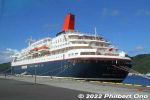
Nippon Maru cruise ship at Naze Port, Amami-Oshima.
|
|
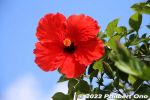
Hibiscus on semitropical Amami-Oshima island, Kagoshima.
|
|

Roadside scenery on Amami-Oshima island, Kagoshima, Japan.
|
|

Roadside scenery on Amami-Oshima island, Kagoshima, Japan.
|
|

Scenic coast on Amami-Oshima island, Kagoshima, Japan.
|
|

Tropical flora on Amami-Oshima.
|
|
|

Coastal scenery on Amami-Oshima island, Kagoshima, Japan.
|
|

Opened in Sept. 2001, Amami Park was built by Kagoshima Prefecture on the site of the old Amami Airport. It has become one of the island's major tourist attractions. On this map of Amami Park, it's easy to see where the runway was.
|
|

Main entrance to Amami Park. First go through the Amami no Sato dome housing the Event Space, Information Space, and Exhibition Hall.Adult admission ¥650 for both Amami no Sato and Isson Tanaka Museum. Open 9 am–6 pm (until 7 pm in July–Aug.) Closed on the first and third Wed. of the month. (Open if a national holiday and closed on the next day instead.) Open every day during April 29th to May 5th, July 21st to August 31st, and December 30th to January 3rd.
https://amamipark.com/
|
|

Amami Park has the Isson no Mori tropical garden area which is free admission, but other facilities charge admission like the Exhibition Hall and Amami Theater. Isson is the name of a local painter.
|
|

Amami Park has a garden area named "Isson no Mori" with many tropical plants. This is an Adan tree. (Pandanus odoratissimus)
|
|

Adan アダン (Pandanus odoratissimus)
|
|

Agave americana 'Marginata' (Variegated Century Plant). Ornamental plant. リュウゼツラン
|
|

Ixora "Super King"
|
|
|
|
|

Sago palms native to Amami and Okinawa. ソテツ
|
|
|

Amami Oshima Park
|
|

The park also has this lookout tower (Tenbodai) with fine views of the area. It might have been the old airport control tower. 展望台
|
|
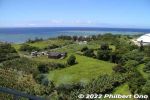
View from the lookout tower.
|
|
|

View from the lookout tower, Amami Park.
|
|
|

View from the lookout tower. The Amami no Sato dome (white) can be seen.
|
|
|

Amami-Oshima coastal view.
|
|
|
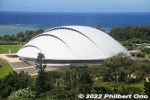
Amami no Sato shell-like dome.
|
|

Tanaka Isson Museum can be seen.
|
|

Rear view of park.
|
|

The new Amami Oshima Airport can be seen in the distance.
|
|

The new Amami Airport's runway can be seen. Amami Park is a short drive from the airport.
|
|

Runway landing lights in the ocean.
|
|

Banana patch
|
|

Amami no Sato dome housing the Event Space, Information Space, and General Exhibition Hall.
|
|

Amami no Sato's Island Information Space explains about Amami Oshima.
|
|

Amami no Sato's Island Information Space explains about local flora and fauna.
|
|
|
|

Amami no Sato's Information Space explains about local flora and fauna.
|
|

Model of Amami Oshima's endemic Amami Kuro-usagi rabbit. Short ears and dark fur.
|
|

Amami no Sato's indoor stage and event space inside the dome. There's also the small Amami Theater showing a short film about Amami. イベント広場
|
|

Amami no Sato's Exhibition Hall. Admission charged. It's a small local museum explaining local flora, fauna, history, and folk culture.
|
|
|
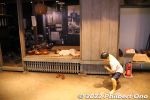
Amami no Sato's Exhibition Hall includes a reconstructed local home.
|
|
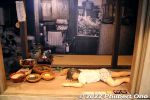
Realistic and humorous mannequins.Kagoshima Amami Oshima park
|
|

Summer day in Amami.
|
|
|

Isson Tanaka Museum is an art museum showing his paintings. Isson Tanaka (1908–1977) was a painter from Tokyo who moved to Amami at age 50. Photography inside the museum is not allowed. 田中一村記念美術館Isson lived on Amami from 1958 until his death in 1977. He painted Amami's flora and fauna. The museum has about 450 of his works and displays about 80 of them at a time. Museum buildings resemble the local Takakura storehouse for grains. Amami-Oshima, Kagoshima.
|
|

Entrance to Amami Resort Basyayamamura, a resort hotel and restaurant on the southern shore of the northern part of the island. Short drive from the airport.
|
|

We had lunch here. Address: 鹿児島県奄美市笠利町用安1246-1
|
|

Amami Resort Basyayama-mura pool. Website: basyayama-mura.com
|
|

Amami Resort Basyayama-mura restaurant terrace right on the beach..
|
|

Amami Resort Basyayama-mura has a nice, white-sand beach.
|
|
|
|
|
|

Lava rock outcropping also on the beach.
|
|
|
|
|
|
|
|
|

This beach had pumice rocks (軽石) creating artistic patterns on the sand. They were still washing up on the beach in June 2022, but not as much as in Oct. 2021 when they clogged harbors and blanketed beaches.
|
|

On Amami-Oshima, Kagoshima, Amami Resort Basyayama-mura beach had pumice that came from an undersea volcano (Fukutoku-Okanoba) erupting near the Ogasawara islands (way south of Tokyo).
|
|
|

Pumice rocks are small, lightweight, porous pebbles. Floats on water. Saw it for the first time here.
|
|

In 2021, an army of volunteers took weeks to clean up Okinawan and Amami beaches. It was almost like cleaning up an oil spill. Glad the problem has subsided.
|
|

Pumice pebbles on a beach in Amami-Oshima, Kagoshima, Japan.
|
|

Someone had recently raked or cleaned up the pumice.
|
|

Basha-yamamura restaurant is a great place for lunch. The terrace has ocean views. This is the cheapest dish on the menu, Tonkotsu udon noodles for ¥1,000. 豚骨うどん
|
|

Restaurant lunch menu. Mainly seafood and local cuisine. Open 11 am to 9 pm.
|
|

Gift shop
|
|

Local bus on Amami Oshima.
|
|

Amami Oshima is slightly larger than the Hawaiian island of Molokai.
|
|

Passing by Amami Oshima Airport.
|
|

Sugar cane on Amami Oshima.
|
|

Way to Cape Ayamaru lookout point.
|
|

Bust of Nagano Yoshitatsu (1898–1984 永野芳辰) at Cape Ayamaru. Nagano was a Japanese government bureaucrat who helped to revert Amami islands back to Japan in 1953. He was born and raised on Amami Oshima. Later became governor of Kochi Prefecture.
|
|

Photo spot at Cape Ayamaru.
|
|

Cape Ayamaru scenery.
|
|

Northern coast of Amami Oshima as seen from Cape Ayamaru.
|
|

Cape Ayamaru sign and photo spot, Amami Oshima, Kagoshima.
|
|

Cape Ayamaru sign and photo spot.
|
|

How Cape Ayamaru got its name.
|
|

Lookout deck at Cape Ayamaru with views of the coral reef and ocean. Amami Oshima, Kagoshima.
|
|

Lookout deck at Cape Ayamaru shows a beautiful aqua-blue ocean.
|
|

Lookout deck at Cape Ayamaru shows a beautiful aqua-blue ocean.
|
|
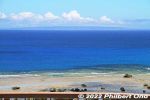
Lookout deck at Cape Ayamaru shows a beautiful blue ocean beyond the coral reef.
|
|
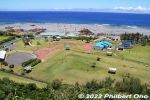
Recreational park down below from the lookout point on Cape Ayamaru.
|
|

Recreational park down below from the lookout point on Cape Ayamaru.
|
|

Tonbara Rock as seen from Cape Ayamaru. トンパラ岩
|
|

Local buses stop here too, not often though.
|
|

Gift shop.
|
|

Roadside scenery on Amami Oshima.
|
|

Street sign promoting sumo wrestler Meisei who is from Amami Oshima. He belongs to Tatsunami Stable. 明生関
|
|

Local brewery producing brown sugar shochu in Tatsugo Town, Amami-Oshima. Uses brown sugar wholly produced in Amami-Oshima. Water comes from Jougo River (じょうご川) fed by an aquifer 120 meters underground. Factory tour and gift shop.They sell three shochu brands: Takakura (高倉), Hama-Chidori (浜千鳥乃詩 原酒), and Jougo (じょうご). https://www.jougo.co.jp/
|
|

When you enter the premises, the factory is on the right, and gift shop on the left. Address: 鹿児島県大島郡龍郷町浦1864-2
|
|

Amami Oshima Shuzo shochu factory.
|
|

300-year-old tree named Sharinbai next to the shochu factory. Used for tsumugi fabric dyeing.
|
|

About the old Sharinbai tree.
|
|

Pine tree next to the shochu factory.
|
|

We had a guided tour of the shochu factory.
|
|

Vats
|
|
|

Packing process. Bottles of shochu being boxed.
|
|

Casks for aging.
|
|

Amami Oshima Shuzo gift shop
|
|

Amami Oshima Shuzo gift shop shochu tasting.
|
|

Amami Oshima Shuzo gift shop sells mainly shochu.
|
|

Amami Oshima Shuzo bottles of shochu with a cruise ship label (for visiting cruise ship passengers).
|
|

Confection in the shape of the Amami rabbit (Kuro-usagi). Amami-Oshima, Kagoshima
|
|

Oshima tsumugi is a local fabric woven from white silk and dyed. Oshima (Ooshima) Tsumugimura is a small textile factory where you can see how they weave and dye the tsumugi fabric. They also sell tsumugi fabrics as kimono, handkerchiefs, etc.
|
|

The factory is in a subtropical garden with tropical flowers and plants. Adult admission ¥500, open every day 9 a.m. to 5 p.m.Address: 1945 Akaogi Tatsugo Oshima, Kagoshima
Local buses stop at Oshima Tsumugimura bus stop. (From Amami Airport, 30 min. by bus.) http://www.tumugi.co.jp/
|
|

Tropical garden setting for this fabric factory. Oshima tsumugimura, Amami Oshima.
|
|

He is dyeing Oshima tsumugi silk fabric in mud.
|
|

He is dyeing Oshima tsumugi silk fabric in mud. The fabric color becomes black. Amami-Oshima island, Kagoshima.
|
|

Oshima (Ooshima) Tsumugimura
|
|

Tie-dyed (in mud) handkerchiefs. The fabric is also dyed with the sharinbai tree containing iron and tannin.
|
|
|

White hibiscus on Amami Oshima.
|
|
|
|
|

Oshima (Ooshima) Tsumugimura fabric factory.
|
|
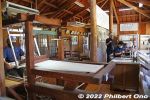
Inside the Oshima (Ooshima) Tsumugimura fabric factory. A few workers demonstrated the production of tsumugi silk fabric. This weaving step is called shimebata to make patterns on the silk.
|
|
|
|
|

Fabric dyes.
|
|

Oshima tsumugi fabric production steps.
|
|

Explanation of the Oshima tsumugi dyeing process.
|
|
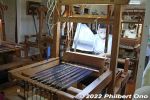
Loom
|
|

Loom to weave Oshima tsumugi.
|
|

Sample Oshima tsumugi fabric with in the typical black color.
|
|

Takakura storehouse with a steep thatched roof. Amami's traditional structure for storing grains. Oshima tsumugimura, Amami Oshima, Kagoshima. 奄美の高倉
|
|

Sago palms with a cone. Oshima Tsumugimura, Amami Oshima, Kagoshima. ソテツ
|
|

White hibiscus
|
|
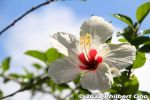
White hibiscus
|
|

Red hibiscus and other flowers in the tsumugi factory's garden setting. Amami Oshima, Kagoshima
|
|

Sago palms, Amami Oshima, Kagoshima
|
|
|

Oshima tsumugi handkerchief I bought for myself. Tie-dyed.
|
|
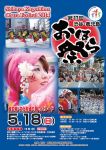
The Shibuya Kagoshima Ohara Festival is a Kagoshima dance parade held annually near Shibuya Station in Tokyo in May. About 2,200 dancers in 63 troupes dance along the Dogenzaka and Bunkamura-dori main roads for almost 3 hours from 1:20 pm to 4 pm.
|
|

These photos were taken on May 18, 2014. Kagoshima is the southernmost prefecture in Kyushu.
|
|

Outside Shibuya Station, they had this tent selling Kagoshima goods and giving out free festival pamphlets.
|
|

See my 29-min. video of the Shibuya Kagoshima Ohara Festival in 2014.
|
|

The dance parade was held on Dogenzaka and Bunkamura-dori roads.
|
|

Dancers started to assemble on the street by 12:30 pm.
|
|
|

The intersection in front of the 109 building was the main area.
|
|

Taiko drummers kicked off the festival.
|
|

Tokyo Fire Dept. Brass Band
|
|

P.A. booth
|
|

Opening ceremony included speeches by politicians.
|
|
|

They danced to two songs played repeatedly. One was Kagoshima Ohara-bushi おはら節, Kagoshima Prefecture's most famous folk song.The song rambles on about things and scenes in Kagoshima like the Sakurajima volcano.
|
|

Poster girl
|
|

The other song was, Shibuya Ondo 渋谷音頭 which mentions sights like Hachiko and Dogenzaka. One of Shibuya's official songs.
|
|
|
|
|
|

Okame
|
|
|
|
|
|
|

Shibuya Kagoshima Ohara Festival
|
|
|
|

Every once in a while, they stopped dancing for 2 min. to allow people to cross the street.
|
|

Most of the dance troupe were Tokyo-based with members having ties to Kagoshima.
|
|

Some troupes came all the way from Kagoshima.
|
|

Shibuya Kagoshima Ohara Festival
|
|
|
|
|
|
|
|
|
|
|
|
|
|
|
|
|
|

During the intermission at 2:25 pm, lively performances by young dancers were held in front of the 109 building. Young Dance Troupe (from Kagoshima) ヤング踊り連
|
|

They were very good.
|
|
|
|
|
|
|
|
|
|
|
|
|
|
|
|
|
|
|
|
|
|
|
|
|
|
|
|
|
|
|
|
|
|
|
|
|
|
|
|

The performed two songs, TOKYO Ohara TOKYOオハラ and Chesuto! Ohara チェスト!おはら.
|
|

The second troupe to perform was the Baton Association of Universities in Tokyo 東京都大学バトン連盟.
|
|
|
|